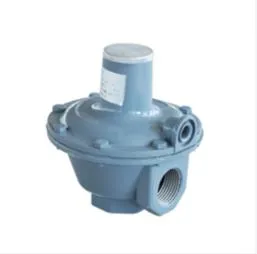
Nov . 29, 2024 15:54
Back to list
Ensuring Safety: Critical Components in Gas Systems
In today's world, ensuring the safe and efficient operation of gas systems is critical. Whether you're managing industrial machinery, residential heating, or gas-powered appliances, having the right components in place can prevent damage, improve performance, and protect against potential hazards. Three key elements that play a vital role in gas systems are the pressure regulating device, pressure reducing device, and gas safety relief valve. Each of these components serves a specific purpose in controlling pressure, enhancing safety, and ensuring that gas systems run smoothly.
The Importance of a Pressure Regulating Device in Gas Systems
A pressure regulating device is essential for controlling and maintaining the correct pressure in gas systems. Whether you're dealing with natural gas, propane, or any other type of gas, fluctuations in pressure can lead to unsafe conditions, inefficient operation, or even equipment failure. The pressure regulating device ensures that the pressure remains within a safe and optimal range for the system to function effectively. By automatically adjusting the flow of gas based on supply conditions, the pressure regulating device helps protect sensitive equipment and maintain consistent performance. This device is particularly important for industrial applications, residential heating systems, and even appliances like gas stoves or water heaters, where pressure stability is crucial for safe operation.

How a Pressure Reducing Device Enhances System Efficiency
A pressure reducing device is designed to lower the incoming gas pressure to a level that is safe for use within a system. High-pressure gas entering a system can damage components, cause leaks, or even result in catastrophic failures. The pressure reducing device helps to mitigate this risk by bringing the pressure down to a safe and controlled level before the gas reaches appliances, equipment, or machinery. This reduction in pressure not only enhances safety but also contributes to system efficiency. By controlling the gas pressure, the pressure reducing device ensures that gas is used effectively, preventing wastage and reducing the likelihood of costly maintenance or repairs. For industrial systems, residential gas lines, or commercial kitchens, this device is crucial for both safety and operational efficiency.
Protecting Your System with a Gas Safety Relief Valve
A gas safety relief valve is an essential safety mechanism in gas systems, designed to prevent overpressure situations that could lead to dangerous consequences. If the gas pressure within a system exceeds safe limits, the gas safety relief valve opens to release excess pressure, protecting the system from potential damage or failure. This valve is particularly important in high-pressure environments such as gas pipelines, industrial plants, and even household gas lines. By automatically releasing pressure when it gets too high, the gas safety relief valve ensures that the system remains within safe operating parameters. This prevents explosions, leaks, or other hazardous conditions, making it an indispensable component for gas safety.
The Role of Pressure Regulating and Pressure Reducing Devices in Safety and Efficiency
Both the pressure regulating device and the pressure reducing device play critical roles in ensuring that gas systems operate safely and efficiently. While the pressure regulating device maintains consistent pressure, the pressure reducing device ensures that gas entering the system is at the correct pressure level for safe use. When used together, these devices provide a comprehensive solution for controlling and optimizing gas flow. By maintaining the right pressure, both devices help prevent equipment wear, improve system performance, and reduce energy consumption. This combination not only enhances safety but also helps save on operational costs in industrial settings, residential gas systems, and commercial applications.
How Gas Safety Relief Valves Complement Pressure Regulation Systems
The integration of a gas safety relief valve with a pressure regulating device and pressure reducing device provides a complete safety solution for any gas system. While the pressure regulating device ensures consistent pressure and the pressure reducing device lowers high incoming pressure, the gas safety relief valve serves as a backup to prevent overpressure situations. Together, these components offer multiple layers of protection, ensuring that gas is delivered safely and efficiently. This comprehensive approach reduces the risk of equipment failure, extends the lifespan of gas-powered appliances, and prevents hazardous accidents. For both industrial and residential applications, these devices are crucial for creating a safe and reliable gas system.
In conclusion, the pressure regulating device, pressure reducing device, and gas safety relief valve are vital components in the safe and efficient operation of gas systems. These devices help ensure that gas is delivered at the correct pressure, preventing system damage, reducing energy waste, and protecting against overpressure situations. Whether you're running a large industrial operation, managing a residential gas line, or maintaining appliances, integrating these components into your system is key to ensuring long-term safety, efficiency, and performance. By choosing high-quality devices and maintaining them regularly, you can safeguard your system and enjoy smooth, reliable operation for years to come.
Latest news
-
Safety Valve Spring-Loaded Design Overpressure ProtectionNewsJul.25,2025
-
Precision Voltage Regulator AC5 Accuracy Grade PerformanceNewsJul.25,2025
-
Natural Gas Pressure Regulating Skid Industrial Pipeline ApplicationsNewsJul.25,2025
-
Natural Gas Filter Stainless Steel Mesh Element DesignNewsJul.25,2025
-
Gas Pressure Regulator Valve Direct-Acting Spring-Loaded DesignNewsJul.25,2025
-
Decompression Equipment Multi-Stage Heat Exchange System DesignNewsJul.25,2025

